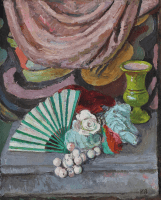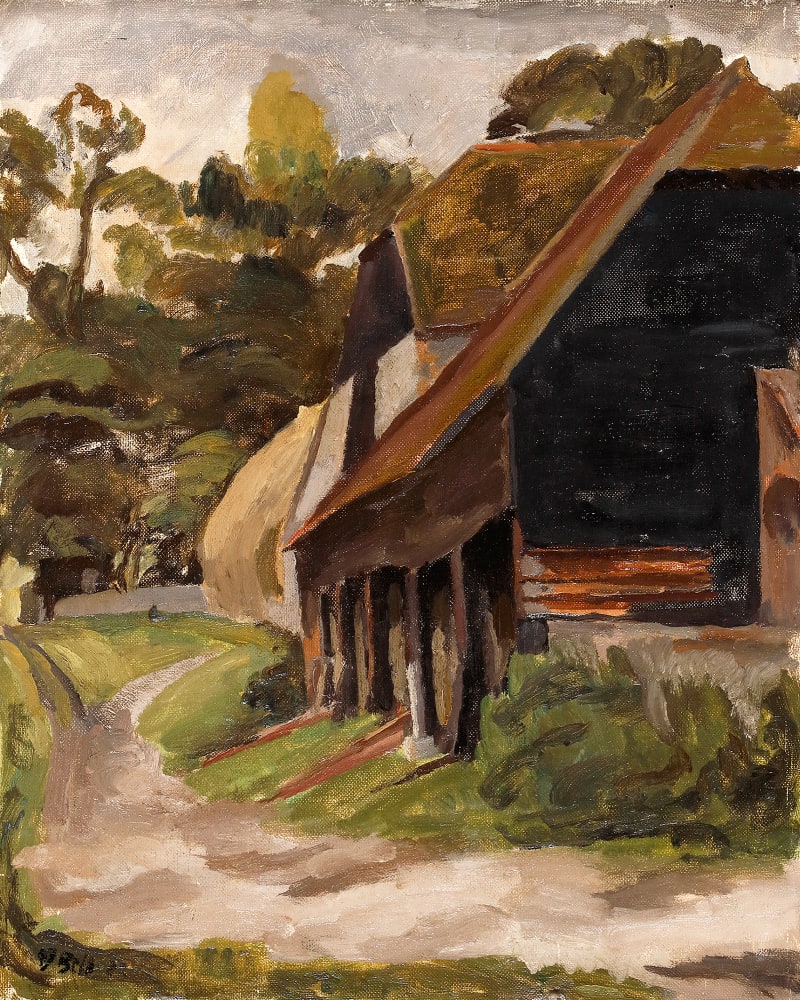Vanessa Bell was a master of the still life genre and her fascination with colour and design is magnified in this modern interpretation of a traditional still-life subject. As a key figure in the Bloomsbury Group, Bell produced some of the most avant-garde art of the early twentieth-century Britain.
This still life was painted at Charleston in the early 1930s when Bell and her partner Duncan Grant shared a studio. Arranged with theatrical flourish, this still life is set against a larger painting by Grant, abstractly depicting a mandolin partially covered by a sweep of pink drapery. Arranged in the foreground is a string beaded necklace, white rose, fan, and a green vase, bought when Bell and Grant were in Spain in spring 1923, which still remains in the collection at Charleston and is included in other works by both Bell and Grant [fig. 1].[1]
During the interwar years, Bell primarily focused on still-life painting. The year that this work...
Vanessa Bell was a master of the still life genre and her fascination with colour and design is magnified in this modern interpretation of a traditional still-life subject. As a key figure in the Bloomsbury Group, Bell produced some of the most avant-garde art of the early twentieth-century Britain.
This still life was painted at Charleston in the early 1930s when Bell and her partner Duncan Grant shared a studio. Arranged with theatrical flourish, this still life is set against a larger painting by Grant, abstractly depicting a mandolin partially covered by a sweep of pink drapery. Arranged in the foreground is a string beaded necklace, white rose, fan, and a green vase, bought when Bell and Grant were in Spain in spring 1923, which still remains in the collection at Charleston and is included in other works by both Bell and Grant [fig. 1].[1]
During the interwar years, Bell primarily focused on still-life painting. The year that this work was painted, she was commissioned to paint the backdrop for the ballet High Yellow, performed at the Savoy Theatre, which may have influenced the highly theatrical composition depicted here. In her biography on the artist, Frances Spalding notes how Bell often returned to her painting with a refreshed mindset after decorative work, which is undoubtedly relevant to this vibrant still life.
This work was originally owned by George Bergen, the artist and close friend of the Bloomsbury Group. Given the frosty relationship between him and Bell, it is curious that Bergen should have owned it. Bergen met Grant in late 1929, from which point they embarked on an intense relationship, spending much time together at Charleston.
[1] We are grateful to Richard Shone for his assistance in the cataloguing of this artwork.













